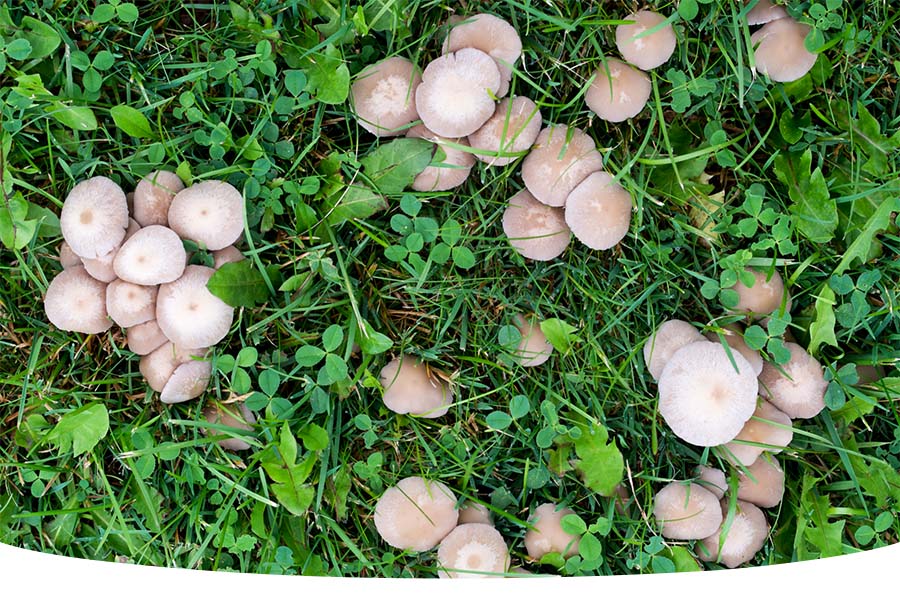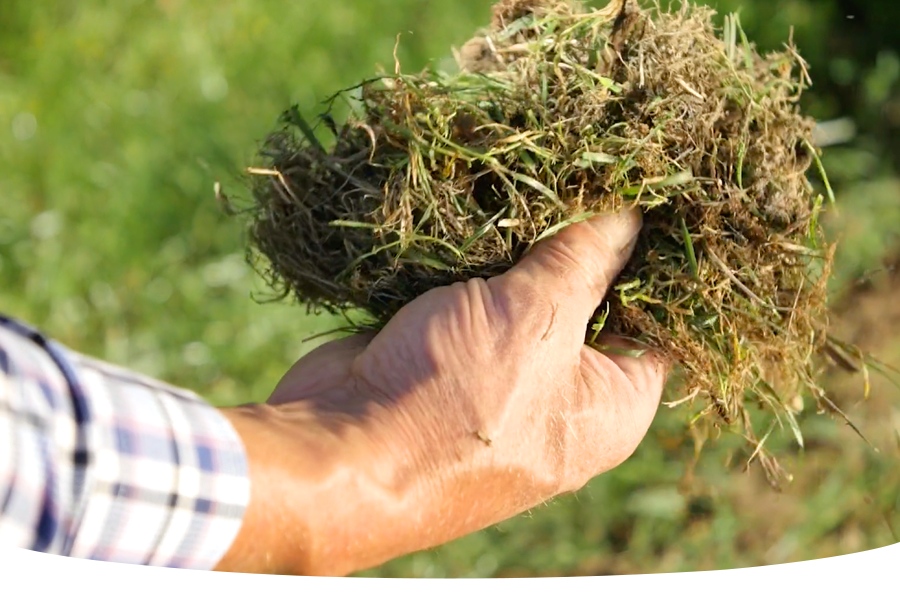How to get rid of mushrooms in lawn UK
You may have noticed mushrooms growing on your lawn but haven’t seen any other gardens on your street plagued with these unsightly fungi – why is this? We’re here to provide advice on what causes mushrooms to grow in your garden and how to get rid of mushrooms on a lawn in the UK!

Why do mushrooms grow in UK lawns?
Water-logged soil is often the result of over-watering and/or poor drainage, and it’s more common in the shaded areas of your garden. Soil that doesn't have drainage to drain water away gives mushrooms the perfect conditions to grow! Mushrooms grow best in damp lawn conditions, and this is one of the most important things to note when knowing how to get rid of mushrooms in a lawn in the UK.
They also love consuming organic waste, such as fallen leaves, twigs, grass clippings, tree bark and animal droppings. For this reason, mushrooms are good for your lawn as they convert these materials into natural fertiliser, releasing beneficial nutrients into the soil for your grass seed to grow.
Although these damp conditions are perfect for mushrooms, and even though the mushrooms can benefit the growth of your garden, the damp conditions encourage moss to grow, which increases the risk of common grass diseases, and in the end, it does more harm than good!
So, how to get rid of mushrooms in lawn UK?
The best way to get rid of mushrooms in a lawn is prevention. By keeping an eye on your grass and soil conditions, you can be a step ahead of the mushrooms and stop their growth completely. Some soil types drain better than others, and some are more likely to hold water - we have a guide on soil types if you are unsure what kind of soil your garden has. As we also mentioned before, mushrooms feast on organic matter in your garden, so by removing grass cuttings, leaves, sticks, and twigs, you will reduce their food source.
If you’ve caught them late and the mushrooms have sprouted up without you noticing, the best thing to do is pull them out from the base of their stem as soon as possible! Removing them this way will also eliminate the risk of children or animals eating them and getting sick.
Short grass dries out faster than long grass, so mow your lawn regularly (once a week in spring and summer) to limit the quantity of water available for the mushrooms. Also, be sure to remove all grass cuttings after mowing to restrict the amount of food the mushrooms have to feed on!
Remove the mushrooms before mowing
As mentioned, pulling mushrooms out by the stem is an easy and effective way to remove them, and you should do this before mowing! Mushrooms produce spores that disperse like pollen via the wind and by animals to grow more mushrooms. By removing them before mowing, you will be limiting their chance to reproduce. Of course, this doesn’t ensure they won’t return at some point, but if you don’t remove them and mow over them with your lawnmower, you will release the spores, and they will likely show their face again, but next time, there will be a lot more!
Thatch adds to the problem
Even the best-kept lawns can suffer from a thatch build-up. However, some lawns will experience it more frequently, and this is where it becomes an issue! Thatch is a layer of interwoven dead grass between your living grass and your soil. This layer of organic waste (as mentioned previously) is a problem that restricts your grass’ ability to grow while providing the perfect growing conditions for mushrooms!
The first step for sorting this out is to de-thatch your lawn. You can do this easily by raking in a criss-cross pattern across your lawn, which will rip up and pull the thatch up from the base of your grass. Some of your grass will likely be pulled out at the same time, but you can overseed these areas to bring them back to health.
Other areas will contain more plant matter, such as wood, bark or large dead tree roots. You need to dig these areas out (where possible) before applying fresh soil and new grass seed.
Aerating and reduce the shaded areas of your lawn
At the same time as doing this, you can aerate your lawn, which will help improve drainage and airflow. Generally, this can be done using a garden fork, but if your lawn is very waterlogged, it would be best to use a mechanical aerator.
Another area where mushrooms love growing is in the shade! So, cut back overhanging branches and trim looming hedgerows to ensure your lawn gets as much sunlight as possible throughout the day. Doing this will also help your garden’s damp areas dry out, which benefits your lawn whilst reducing the likelihood of moss or mushroom growth. If you find that grass struggles to grow in the shaded areas of your garden (which is quite likely to be the case!), then using grass seed that is specially mixed for its ability to grow in the shade is what you need.
Knowing how to get rid of mushrooms in your UK lawn
You can apply a fungicide or nitrogen-rich fertiliser to combat the habitat that mushrooms love. This will fight the toadstools and feed your grass to promote long-term healthier growth. However, be aware that it’s still possible the mushrooms will reappear if you have not corrected the dampness and drainage problems in your garden.
If you would like any further advice on a mushroom infestation, correcting drainage problems or issues that may seem unique to your garden, please get in touch with us; we are always happy to help.






